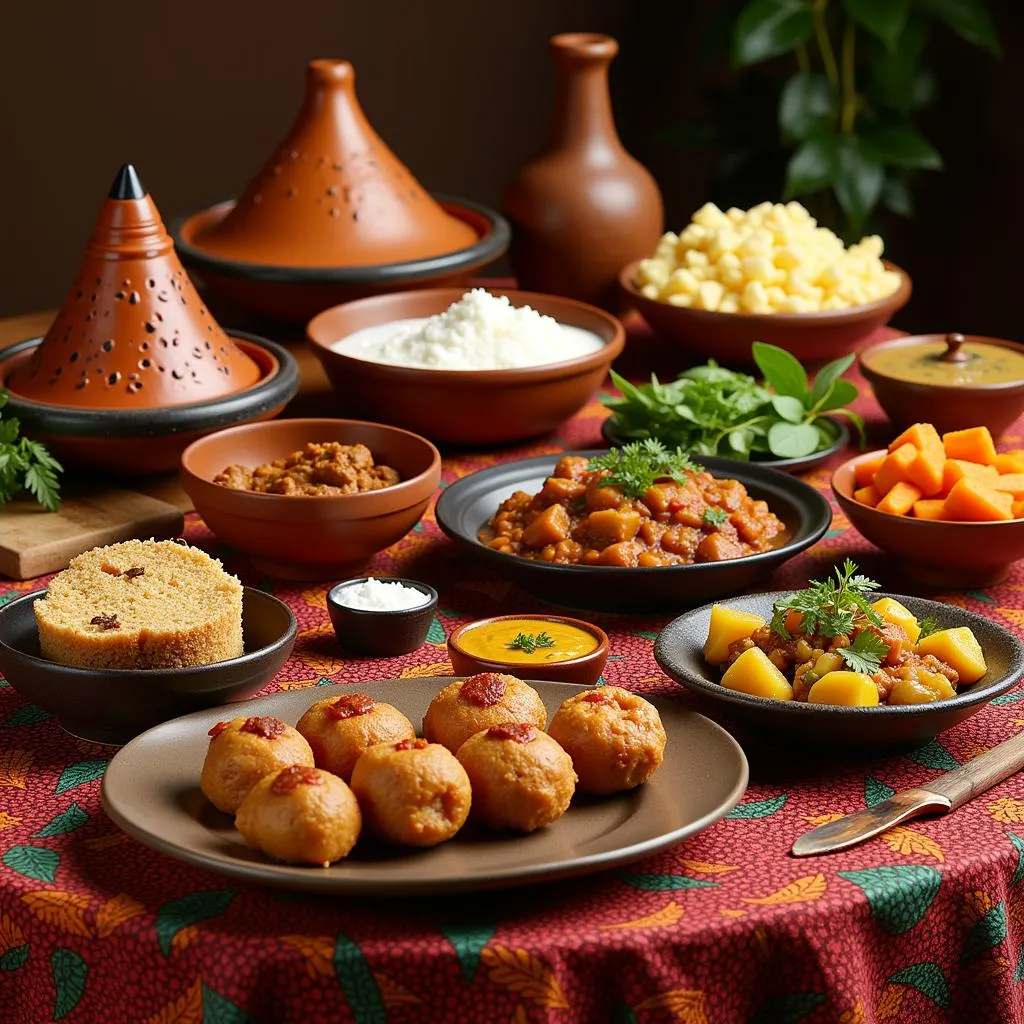A Delicious Guide to African Fruit Names
Africa, a continent teeming with life, boasts a rich tapestry of cultures and an equally diverse bounty of nature. Among its treasures are a multitude of exotic fruits, bursting with flavors that tantalize the palate and offer a taste of the continent’s vibrant soul. From the sweet and creamy Marula to the tangy and refreshing Baobab, African fruits are a testament to the continent’s biodiversity and culinary heritage. This exploration of African Fruit Names takes you on a journey through the continent’s orchards and markets, uncovering the unique characteristics, cultural significance, and culinary uses of these exotic delights.
Unveiling the Exotics: Lesser-Known African Fruit Names and Their Allure
Beyond the familiar bananas, mangoes, and pineapples lies a world of lesser-known African fruits with intriguing names and even more captivating flavors.
Take, for instance, the Miracle Fruit, scientifically known as Synsepalum dulcificum. This West African native possesses a magical quality – it can temporarily alter your taste perception, making sour foods taste incredibly sweet. Imagine biting into a lemon and experiencing a burst of sweetness! The secret lies in a protein called miraculin found in the fruit’s pulp.
Then there’s the African Star Apple, or Chrysophyllum albidum, a fruit that holds a special place in many West African cultures. Its skin, when cut, reveals a star-shaped pattern, hence its name. The fruit itself offers a sweet, milky pulp that can be enjoyed fresh or used in beverages and desserts.
Another fascinating fruit is the Safou, also known as the African Pear or Dacryodes edulis. Native to Central Africa, this fruit surprises with its buttery, avocado-like texture and a flavor that hints at spinach and artichoke. Rich in healthy fats and nutrients, Safou is a versatile ingredient in both sweet and savory dishes.
The Baobab: More Than Just a Tree, a Source of African Fruit
The majestic Baobab tree, often referred to as the “Tree of Life,” is an icon of the African savanna. But did you know that its fruit, the Baobab Fruit, is a nutritional powerhouse? Encased in a hard, woody shell, the Baobab fruit holds a powdery pulp rich in Vitamin C, antioxidants, and fiber. This pulp can be enjoyed directly or used to make a refreshing drink, often called “monkey bread” due to its popularity with baboons.
Beyond its nutritional value, the Baobab fruit holds cultural significance in many African communities. Its long shelf life makes it a valuable food source during lean times, and its various parts are used in traditional medicine and ceremonies.
From Savory to Sweet: Culinary Uses of African Fruits
The diversity of African fruits extends beyond their appearance and flavors to their culinary versatility. While many, like mangoes, pineapples, and watermelons, are enjoyed fresh, others find their way into a range of dishes, both sweet and savory.
The tangy Tamarind fruit, with its sticky brown pulp, adds a unique sour note to sauces, chutneys, and stews. Its pulp is also used to make a refreshing drink, popular in many African countries.
The Kigelia Africana, or Sausage Tree, bears large, sausage-shaped fruits that are not edible raw. However, these fruits are used in traditional medicine and are sometimes fermented to produce an alcoholic beverage.
From refreshing beverages to flavorful stews and desserts, African fruits offer a wide array of culinary possibilities, adding a touch of exoticism and a burst of flavor to any dish.
Experiencing the Taste of Africa
Exploring the world of African fruit names is a journey of discovery for the senses. From the familiar sweetness of mangoes to the surprising tang of Tamarind and the unique flavor of the African Star Apple, these fruits offer a taste of the continent’s diverse flavors and culinary heritage. Whether enjoyed fresh, incorporated into traditional dishes, or transformed into refreshing beverages, African fruits are a testament to the richness and diversity of the continent’s natural bounty.
So, the next time you’re looking for a taste adventure, consider seeking out these exotic fruits and experience the flavors of Africa.
FAQ: Unpeeling the Mystery of African Fruit Names
1. What is the most popular fruit in Africa?
While it’s difficult to pinpoint just one, mangoes, bananas, and oranges are among the most widely consumed fruits across the continent.
2. Are all African fruits safe to eat?
As with any fruit, it’s important to identify and consume them correctly. Some African fruits, like the Sausage Tree fruit, are not meant to be eaten raw and require specific preparation methods. When in doubt, it’s always best to err on the side of caution and consult local experts or resources.
3. Where can I buy African fruits?
Depending on your location, you might find some African fruits in specialty grocery stores or ethnic markets. Online retailers also offer a wider selection of exotic fruits, including those from Africa.
4. Can I grow African fruits in my garden?
The success of growing African fruits in your garden depends on your climate and soil conditions. Some fruits, like mangoes and papayas, thrive in tropical environments, while others might require specific growing conditions.
5. What are some health benefits of African fruits?
African fruits are packed with vitamins, minerals, and antioxidants that offer a range of health benefits. From boosting immunity to aiding digestion and promoting healthy skin, these fruits are a delicious way to nourish your body.
Need Help Navigating the World of African Fruits?
Contact us! We are here to answer your questions and connect you with resources to further explore the fascinating world of African fruit names and their culinary uses.
Phone: +255768904061
Email: kaka.mag@gmail.com
Address: Mbarali DC Mawindi, Kangaga, Tanzania
Our team is available 24/7 to assist you.



